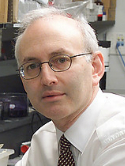| Abstract: |
Transcription factors and histones are similarly modified through acetylation, phosphorylation, ubiquitination and methylation, Which impact on the transcriptional regulation of gene expression and various biological processes in normal and malignant hematopoiesis. The t(8;21) associated AML1-ETO fusion protein is found in 40% of the FAB M2 subtype of acute myeloid leukemia, but how the post-translational modification of AML1-ETO affects its leukemogenicity is largely unknown. Here we show that AML1-ETO directly interacts with the lysine acetyltransferase, p300, via the region containing NHR1 domain and that p300 can acetylate two lysine residues in AML1-ETO and AML1-ETO (exon 9a) in human and mouse leukemia cells. To understand the biological effects of AML1-ETO acetylation, we used human CD34(+) cord blood cells as a preleukemia model. The maintenance of CD34(+) cells by the acetylation defective form of AML1-ETO was 5 fold less than with AML1-ETO (p<0.01) in the liquid culture assay, and. unlike the effect of AML1-ETO, the number of the cobble stone area forming cells (CAFC) was not increased by the Mutant AML1-ETO in CAFC assay. However, the block-in erythroid and myeloid differentiation conferred by AML1-ETO was still seen in the AML1-ETO acetylation mutant transduced human CD34(+) cells. We then approved the impact of acetylation on leukemogenicity using the AML1-ETO9a (AE9a) mouse leukemia model. Mice receiving AE9a acetylation mutant transduced fetal liver cells have not developed leukemia by Day 250, whereas all the mice receiving AE9a transduced cells died due to leukemia before bay 160, with a Mean survival time of 109 days (p<0.001). These results suggest that the acetylation of AML1-ETO is required not only for its self-renewal promoting effects and but also for the development of acute leukemia. To gain insight into the mechanisms of AML1-ETO,acetylation; we performed luciferase assays and found that the AML1-ETO acetylation mutant lost the ability to activate an M-CSFR promoter driven reporter construct. Furthermore, the expression levels of AML1-ETO activated target genes related to self-renewal were not upregulated in AML1-ETO acetylation mutant transduced human CD34(+) cells. These results indicated that the acetylation is crucial to AML1-ETO induced transcription activation. We have also been studying the role of the region containing NHR1 domain (245 to 430 aa) in AML1-ETO: deletion of this region abrogated the binding of p300 to AML1-ETO and led to loss of AML1-ETO lysine acetylation. Furthermore, loss of the region containing NHR1 domain abrogated the self-renewal properties of AML1-ETO and the activation of AML1-ETO target genes in human CD34(+) cord blood cells, without affecting its differentiation-blocking activity or its ability to repress gene expression. Given the importance of the acetylation of AML1-ETO in its biological effects, we inhibited p300 function, chemically and using RNA interference; this blocked the transcriptional activation of AML1-ETO target genes, and inhibited the growth of AML1-ETO expressing AML cells in both pre-leukemic and leukemia models. All together, we have found that the acetylation of AML1-ETO via p300 is indispensable for its leukemia-promoting activity and for its ability to activate gene expression. Our work suggests that inhibition of p300 function may represent an important new anti-leukemia strategy that targets self-renewing, leukemia-initiating cells. |








